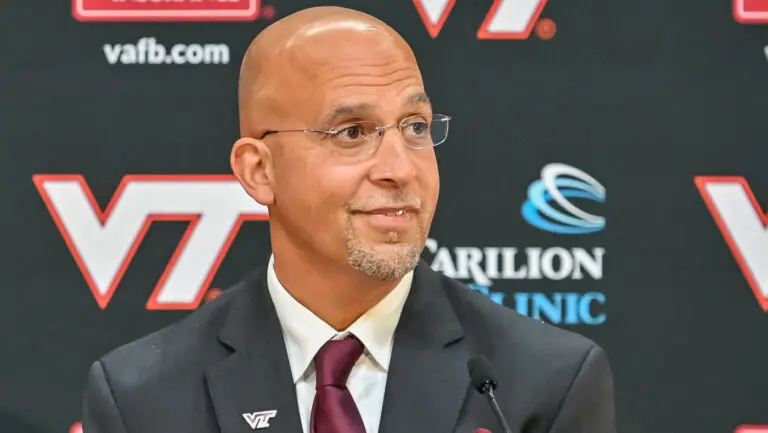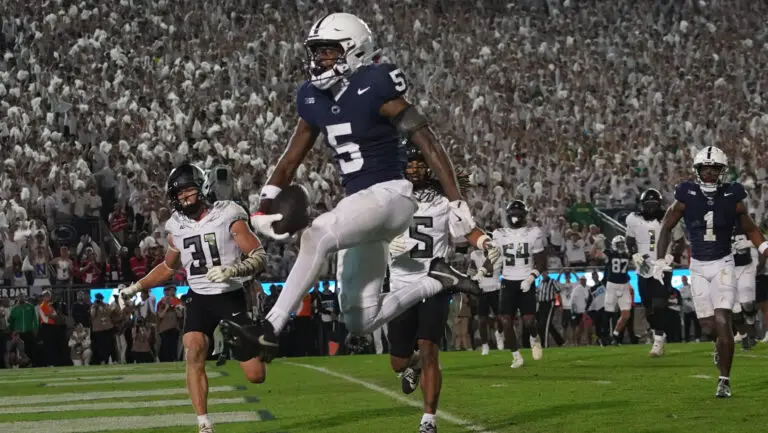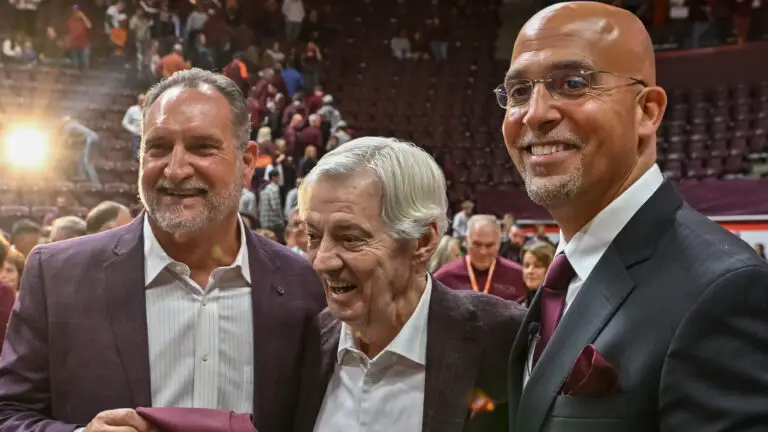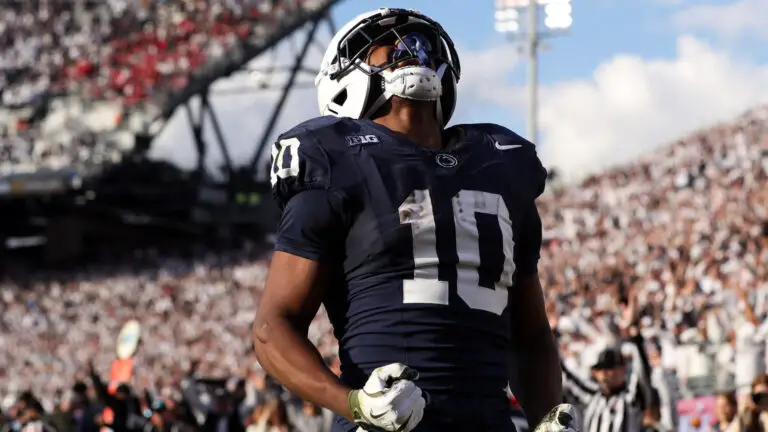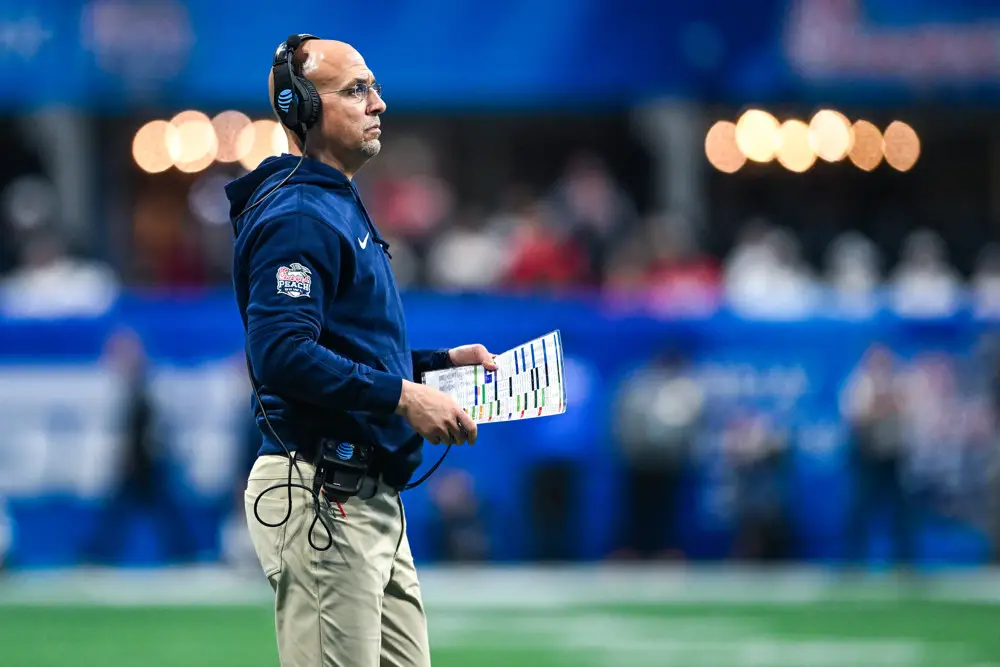
Penn State head coach James Franklin reacts during the Chick-fil-A Peach Bowl (Photo by Rich von Biberstein/Icon Sportswire)
Penn State Football has come a long way, especially in this new era of Name, Image, and Likeness (NIL).
Under head coach James Franklin, the program has averaged the 15th-ranked recruiting class nationally, while finishing with an average AP ranking of 8th. Franklin also ranks 7th among active coaches in producing NFL Draft picks—a remarkable feat considering Penn State’s relative lack of NIL funding compared to other top programs.
But the cracks are starting to show, particularly at wide receiver.
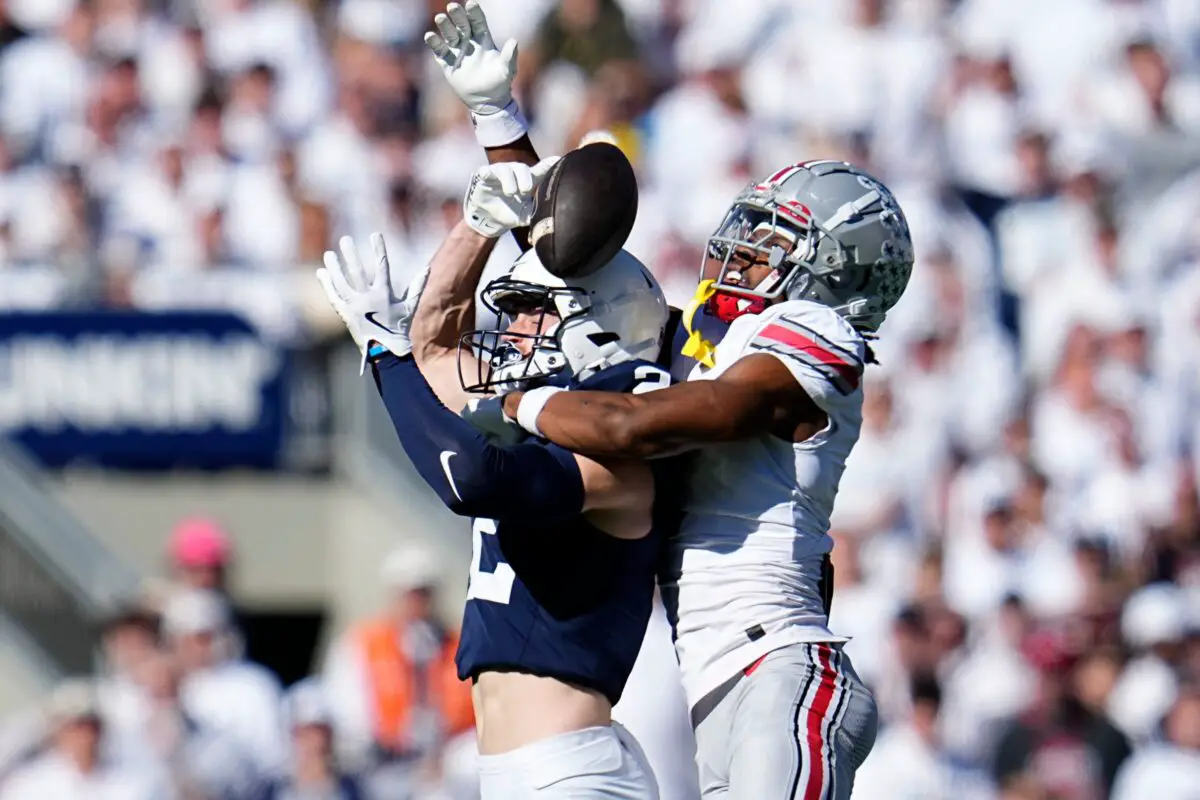
Since 2012, the Nittany Lions have steadily declined at a position that has become increasingly critical in modern football.
Elite wide receivers elevate offenses to new heights, but they are also among the most expensive recruits to secure. Penn State has pursued and lost multiple top-tier receiver prospects, often outbid by programs with stronger NIL support.
Schools like South Carolina and Baylor—programs without Penn State’s recent success or overall talent—have managed to land elite players over the Nittany Lions.
Meanwhile, rivals like Ohio State have invested heavily in wide receiver recruiting and development, earning the reputation as “WR U.” That investment has been the difference-maker for the Buckeyes in high-stakes games.
Could you imagine what quarterback Drew Allar could do leading an offense with Ohio State-caliber receivers?
Penn State Football Has Help on the Horizon
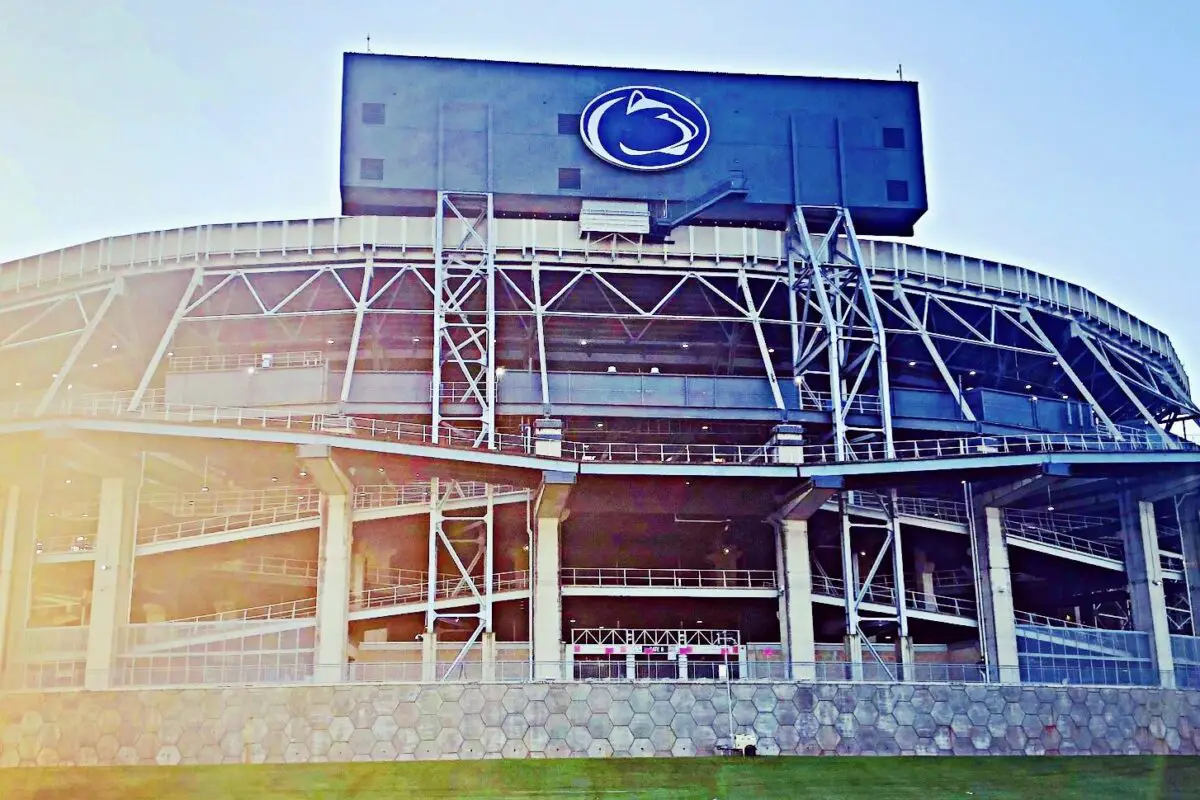
There is some relief coming.
As part of the proposed House v. NCAA settlement, Division I schools will be permitted to share athletic department revenues with varsity athletes starting in the 2025-26 academic year. The initial revenue-sharing cap is tentatively set at $20.5 million per school annually.

Based on the latest NCAA financial reports, Penn State Football is positioned to benefit significantly. With an estimated $160,000 per player in revenue sharing—ranking 4th nationally—the Nittany Lions will have a competitive advantage. And that figure doesn’t even account for individual NIL deals players may negotiate.
This change underscores why the financial success of a program—through ticket sales, merchandise, and booster contributions—matters more than ever. James Franklin’s ability to keep Penn State winning consistently and filling Beaver Stadium remains crucial to sustaining the program’s future success.
Where Are the Big Donors?
Despite Franklin’s efforts, Penn State’s NIL struggles boil down to a lack of financial support from alumni and boosters.
While tens of millions of dollars are being donated for stadium renovations, little of that money is being funneled toward attracting the best players to compete in that stadium.
Other programs have high-profile donors leading the way.
Oregon has Phil Knight of Nike. Michigan boasts backing from Barstool Sports founder Dave Portnoy and billionaire Larry Ellison, who reportedly collaborated to spend $10 million to secure a quarterback. Recently, the Miami Hurricanes announced the addition of former QB Carson Beck, reportedly with a $4 million NIL deal.
Penn State, by contrast, has no such anchor donor.
The school’s vast network of successful alumni includes individuals like Linda Yaccarino, CEO of X and a Penn State graduate worth an estimated $50 million; actor Keegan-Michael Key, with a net worth of $15 million; and Terry Pegula, owner of the Buffalo Bills and Sabres, worth over $7 billion.
Yet, little action has been taken to mobilize this group to support the program’s NIL efforts.
Even Penn State’s enormous alumni base of 290,000 active members could make a significant impact. If every alum donated just $20, it would generate $5.8 million for NIL—a game-changing amount that could help the program recruit and retain top talent.
A Critical Time for Penn State Football
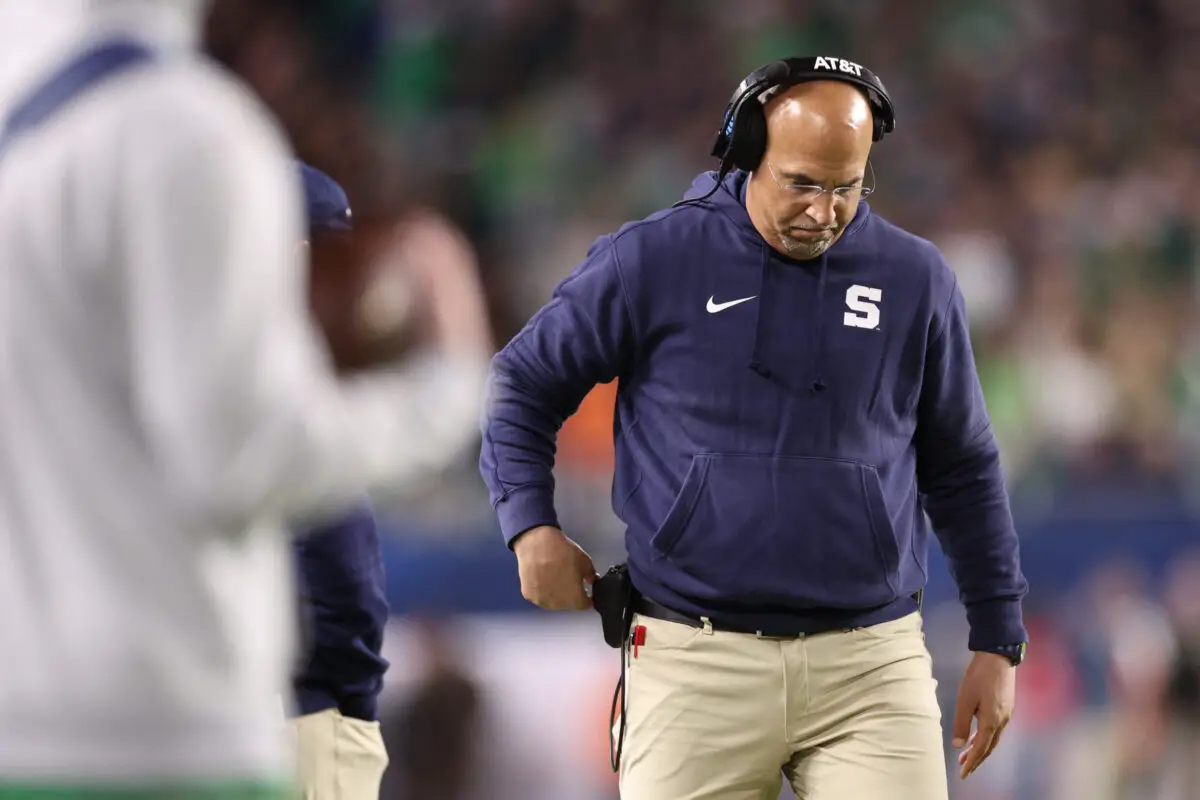
The reality is simple: unless Penn State’s alumni, boosters, and graduates step up now, the program will struggle to keep pace with college football’s elite.
Without significant NIL support, the Nittany Lions risk watching top wide receivers make plays against them, instead of for them.
This is a pivotal moment for the future of Penn State Football.
The foundation is strong, but it’s going to take a unified effort from the largest alumni network in the country to turn potential into championships.
MORE Penn State Football News from NittanyCentral:
- Roster Deep Dive – Does Penn State Have the Pieces to Run it Back in 2025?
- Penn State Adds Starting Caliber Offensive Lineman from the Transfer Portal
- Tyler Warren’s ‘Dream’ NFL Draft Destinations

